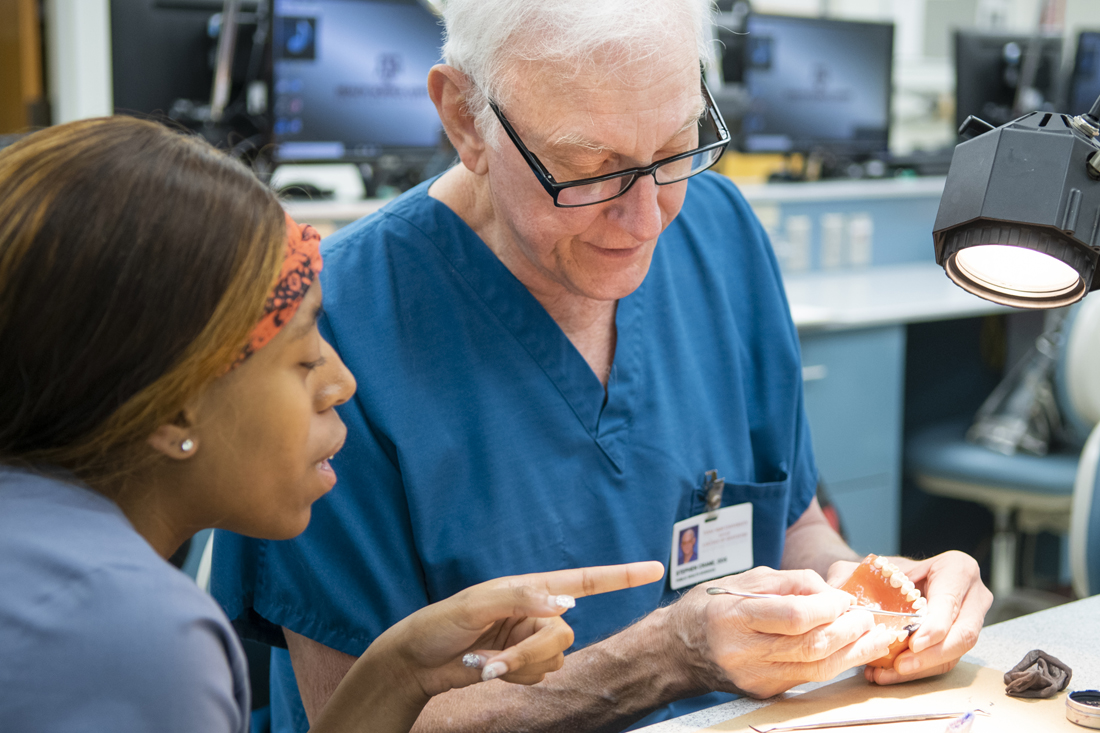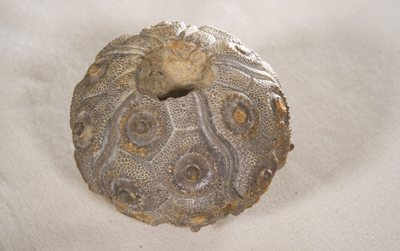THE WAY I SEE IT: DR. STEPHEN CRANE ’73

Good luck finding Dr. Stephen Crane ’73 in his campus office. More often than not, this faculty member is on the move in his role as clinical associate professor in the Department of Public Health Sciences.
After the end of August, that will change as he transitions to a new role: retirement.
Crane already has an action plan for his newfound time, cataloging every one of the thousands of “good, rare stuff” in his late father’s extensive fossil

collection. The entire set, derived primarily from Texas, has already been accepted by the University of Texas, Crane says, and it’s up to him to get it ready to donate to the paleontology department in Austin. He has both a personal interest and firsthand knowledge of the collection, because he helped collect some of the specimens while on fossil-hunting trips with his parents.
This behemoth task may mean Crane’s “fossil room” at home will keep him closer to a desk chair than he has been during his 18-year stint at Texas A&M College of Dentistry.
He has roamed far and wide with the brightly painted Seal Mobile as the director of the college’s school-based sealant program. The van transports portable chairs and dental equipment, dental students and faculty to schools in Dallas and surrounding areas to provide dental sealants to elementary schoolchildren.
His outreach activities go far beyond sealants: overseeing student volunteers at multi-day events in South Texas and East Texas, providing faculty supervision at the college’s community partner clinics, volunteering at student-led Give Kids a Smile events and numerous community health fairs in the Metroplex, participating in Texas Mission of Mercy, and serving future students with education and mentoring during their visits to campus.
Crane serves as course director for several levels of the college’s Summer Predental Enrichment Program, and volunteering for that program is where he plans to draw the retirement line.
“I’m not ready to give that part up yet. It’s not work; it’s fun,” he says of the hours spent with future students each summer in conjunction with Office of Student Development staff. Crane sets up preclinical laboratory activities, cleans up the lab space after their conclusion, gives lectures and exams, and directs courses for both collegiate and high school participants.
“I like seeing these students matriculate from just completing the ninth grade to earning a D.D.S. degree,” he says.
Crane also enjoys leading labs and activities for monthly meetings of the Future Dentist Club on campus, which honored him in 2014. He was the 2015 faculty recipient of the college’s Institutional Service Excellence Award.
He takes work but not life too seriously, as evidenced by participating in—even winning—a campus Halloween costume contest dressed as John Travolta in “Saturday Night Fever.”
Here’s a bit more in Crane’s own words.
What gets you out of bed in the morning? I get up no later than 5:30; sometimes before. I feed six outside cats—two in the front of the house and four in the back. They are used to being fed early. Also, I like to get to the school by 6:30 a.m.
Do you keep in touch with your classmates? Mainly with Amp Miller and Mike McWatters. We all graduated in 1973. Recently I did have dinner with the two people who sat on either side of me in school: Joe Crain and Tom Croft. That was the first time I had seen them since dental school.
Did your early years teach you a thing or two? Yes. I had to learn on my own. The dentist I associated with was not a mentor, so I had virtually no guidance. My advice to new graduates is to do your homework and pick someone who will mentor and guide you, because you will be on a learning curve for 10 years.
What’s the best part of your workday? The people I work with; they are great.
What’s next up in your life? It probably will take me three years working almost full time in my “fossil room” at home to catalog each item in over 100 big boxes of fossils I inherited from my father. I’m an only child, so when my parents went fossil hunting, I had to go. That means I also helped them collect. Now I take my daughter and her husband each year to our hidden spot on a ranch in West Texas, where I’ve been going for over 60 years now. We almost always find something; it’s like having your own gold mine. After I retire, I plan to bring home one box of fossils at a time from the storage facility, and after I catalog everything, I will have the collection appraised to get it ready for donation. Some of the items have handwritten notes and labels by my father, and the university wants all of that information. To me it’s very serious work; his collection needed to be at a university or museum. It has as many as 10 fossils that were previously “undescribed.” I got one of these named after my father—it’s already in the UT paleontology department’s collection—and I may name others after each member of my family.